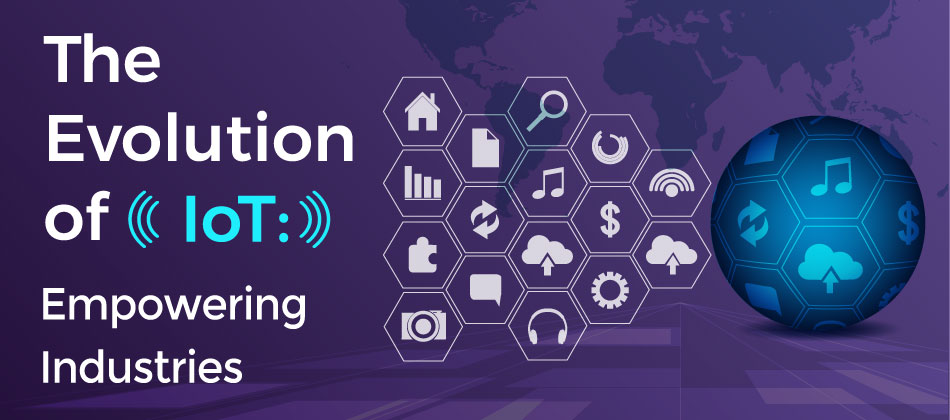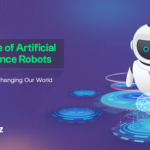Table of Contents
ToggleIntroduction
The Internet of Things (IoT) has emerged as a transformative technology, revolutionizing the way we interact with the world around us. By connecting everyday objects to the internet, IoT has created a network of devices that can communicate, collect data, and perform intelligent actions. This interconnected ecosystem of devices has the potential to empower industries, streamline processes, and enhance our daily lives. In this blog, we will explore the evolution of IoT, its impact on various sectors, and its future potential.
The Rise of IoT: From Connected Devices to Connected Ecosystems
The concept of IoT has its roots in the early 2000s when researchers envisioned a world where objects could be tagged and monitored through the internet. Over the years, advancements in wireless connectivity, miniaturization of sensors, and the proliferation of smart devices have accelerated the growth of IoT.
Connected Devices: The initial phase of IoT focused on connecting devices like smartphones, wearables, and smart home appliances. These devices could gather data, provide remote control, and offer convenience in our daily lives. Examples include fitness trackers, smart thermostats, and voice-controlled assistants like Amazon Echo and Google Home.
Industrial IoT (IIoT): As IoT evolved, its applications expanded to industrial sectors, giving birth to Industrial IoT (IIoT). IIoT enables organizations to connect and monitor machines, collect real-time data, and optimize operations. Industries such as manufacturing, agriculture, energy, and logistics have embraced IIoT to improve efficiency, reduce costs, and enhance productivity. For instance, sensors placed on machinery can monitor performance, detect anomalies, and trigger maintenance alerts to prevent breakdowns.
IoT’s Impact on Industries: Transforming Processes and Creating New Opportunities
Manufacturing: IoT has revolutionized the manufacturing industry, giving rise to the concept of “smart factories.” Connected sensors and devices enable real-time monitoring of production lines, supply chain optimization, predictive maintenance, and improved safety. IoT-powered automation and data analytics enhance productivity, reduce downtime, and enable faster decision-making.
Healthcare: IoT is transforming healthcare delivery by enabling remote patient monitoring, smart medical devices, and personalized healthcare solutions. Connected wearables and sensors can continuously monitor vital signs, allowing for early detection of health issues. IoT also facilitates the seamless exchange of medical data between patients, healthcare providers, and medical devices, leading to improved patient outcomes and more efficient healthcare systems.
Smart Cities: IoT plays a crucial role in building smarter and sustainable cities. Connected sensors and devices are used to monitor and manage traffic flow, optimize energy consumption, detect environmental changes, and improve public safety. By analyzing data collected from various sources, cities can make informed decisions, reduce congestion, minimize pollution, and enhance the quality of life for residents.
Future Potential and Challenges
The future of IoT holds immense potential as the technology continues to advance. Here are a few areas where IoT is expected to make a significant impact:
Autonomous Vehicles: IoT will play a crucial role in the development of self-driving cars, enabling vehicle-to-vehicle communication, real-time traffic analysis, and enhanced safety features.
Smart Homes and Cities: The integration of IoT devices and systems will create more intelligent and energy-efficient homes and cities, with seamless automation, optimized resource utilization, and enhanced security.
Healthcare Innovations: IoT will facilitate the growth of telemedicine, remote patient monitoring, and personalized medicine, enabling improved healthcare access and outcomes.
However, the widespread adoption of IoT also poses challenges. Security and privacy concerns, interoperability issues, and the management of massive amounts of data are some of the key challenges that need to be addressed for the technology to reach its full potential.
Conclusion
Looking to the future, IoT holds tremendous potential for further growth and innovation. As technologies continue to advance, we can expect IoT to become even more prevalent and integrated into our everyday lives. From autonomous vehicles to personalized smart homes, IoT will continue to reshape industries and transform the way we live, work, and interact with our surroundings.
However, with this growth also comes challenges that need to be addressed. Security and privacy concerns, interoperability issues, and the management of vast amounts of data are among the key challenges that need to be overcome to fully unlock the potential of IoT.
In conclusion, the evolution of IoT has had a profound impact on industries, enabling greater connectivity, efficiency, and innovation. As we continue to harness the power of IoT, we must strive to address the challenges and ensure that data security, privacy, and interoperability remain at the forefront. By doing so, we can unlock the full potential of IoT and create a future where our interconnected devices work together harmoniously, empowering industries and improving the quality of our lives.



